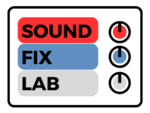Equalization (EQ) is an essential tool in music production that allows you to shape the tonal characteristics of individual instruments, vocals, or an entire mix. By adjusting the balance of different frequencies, EQ empowers you to enhance clarity, balance, and separation, resulting in a more polished and professional sound. In this article, we will delve into the intricacies of equalization, its best practices, the different types of EQs, and understanding the frequency spectrum and its characteristics.
Understanding the Frequency Spectrum
The frequency spectrum represents the range of audible frequencies in music production, typically measured in Hertz (Hz). It spans from the low-end bass frequencies up to the high-end treble frequencies. The human hearing range is commonly considered to be from 20 Hz to 20,000 Hz, although individual hearing abilities may vary. Let’s explore the different frequency bands within this spectrum and their characteristics:
Sub-Bass (20 Hz – 60 Hz): This is the lowest range that provides the foundation of the mix. Sub-bass frequencies are felt more than heard and can add depth and power to the overall sound.
Bass (60 Hz – 250 Hz): The bass range adds warmth, weight, and punch to the mix. It encompasses the fundamental frequencies of kick drums, bass guitars, and low-end elements.
Low-Mids (250 Hz – 500 Hz): This range affects the fullness and body of instruments. Boosting can add richness, while cutting can reduce muddiness or boxiness.
Midrange (500 Hz – 2 kHz): The midrange is crucial for defining the character and presence of instruments and vocals. Boosting can enhance clarity and intelligibility, while cutting can address harshness or nasal qualities.
Upper-Mids (2 kHz – 4 kHz): This range contributes to the attack and definition of instruments. Boosting can bring out the presence and detail, while cutting can reduce excessive brightness or sibilance.
Presence (4 kHz – 8 kHz): The presence range adds brilliance and airiness to instruments and vocals. Boosting can increase clarity and energy, while cutting can tame harshness or piercing frequencies.
Brilliance (8 kHz – 16 kHz): This high-frequency range provides sparkle and sheen to the mix. Boosting can enhance brightness, while cutting can reduce ear fatigue or excessive sizzle.
Types of EQs
There are various types of EQs available, each with its own characteristics and functionality. Here are some common types:
Parametric EQ: This versatile EQ offers precise control over frequency, bandwidth (Q), and gain. It allows you to pinpoint specific problem areas or shape the tonal balance with surgical precision.
Graphic EQ: Graphic EQs feature fixed frequency bands with fixed level controls. They are useful for broad tonal shaping and are commonly found in live sound applications.
Shelving EQ: Shelving EQs provide a gentle slope for boosting or cutting frequencies above or below a specific point. They are commonly used to adjust the overall tonal balance of a mix.
Notch Filter: Notch filters are designed to remove or attenuate specific frequencies, ideal for eliminating unwanted resonances or feedback.
Best Practices for Using EQ
When utilizing EQ in music production, it’s important to follow some best practices:
Use EQ sparingly: Avoid excessive EQ adjustments, as they can lead to unnatural or unbalanced results. Make subtle changes and trust your ears.
Listen critically: Train your ears to identify problematic frequencies or areas that require enhancement. A/B comparisons can also help in making informed decisions.
Address issues in the recording stage: It’s always best to capture a high-quality audio source. Proper mic placement, instrument choice, and room treatment can minimize the need for excessive EQ corrections.
Make gradual adjustments: Instead of drastic boosts or cuts, opt for small adjustments and evaluate their impact on the overall mix.
Trust reference tracks: Compare your mix to professionally mixed and mastered tracks in a similar genre to gain insights into the desired tonal balance.
Equalization is a powerful tool in music production that allows you to shape the tonal characteristics of your audio material. By understanding the frequency spectrum, the different frequency bands, and their characteristics, you can make informed decisions when applying EQ. Remember to use EQ judiciously, trust your ears, and strive for a balanced and polished sound. With practice and experimentation, mastering the art of equalization will elevate your music productions to new heights.





Comments 1